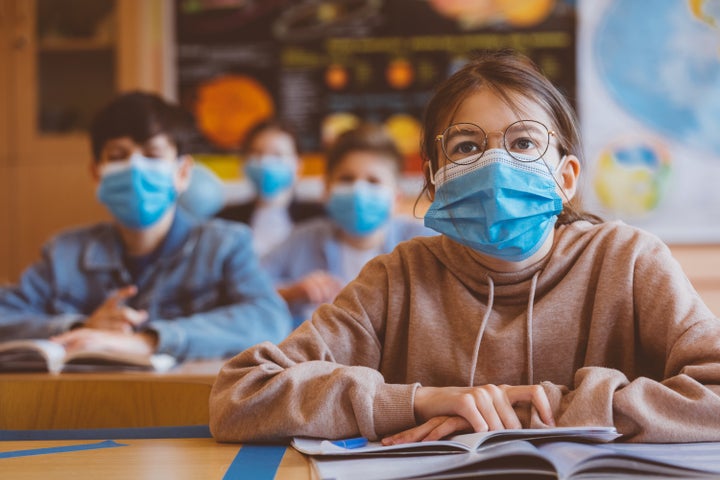
This year’s back-to-school season is, to put it lightly, a chaotic nightmare. After six months of kids staying home and trying to learn without in-person socializing, while parents work or handle other home responsibilities, many are heading back to the classroom — a move that comes with its own risks and anxieties.
Back-to-school plans differ by province, but what they have in common is that they’re pretty universally loathed. In Ontario, over 260,000 people have signed a petition demanding reduced class sizes. In B.C., two dads launched a lawsuit claiming the province was endangering students and teachers.
Watch: This is what classrooms look like during a pandemic. Story continues after video.
For parents who are worried about safety but still feel that sending their kids back to school makes more sense than the alternative, there are a number of things they can do to try to minimize their own risk — and to stay safe in case there is an outbreak.
Start by making a plan
If there is an outbreak — which Ontario defines as two or more cases in students, teachers or staff in the same class or cohort — the school and your local public health unit will get in touch with specific information. Most provinces’ plans include imposing isolation on the person who has contracted the virus while they’re in school, in a designated “quarantine” area, and asking them to either self-quarantine at home or get a negative test before they come back to school.
But there’s lots you can do to prepare yourself in case the worst happens, and there is an outbreak, resulting in your child having to stay home from school or daycare.
The first and most important step is to make a plan before it happens. You can get through a crisis much more easily if you’re prepared for it.
- Make sure you understand the school’s rules. Your child’s school should have a plan in place in case someone in the class gets sick or shows symptoms. Familiarize yourself with those rules — if the information hasn’t already been provided to you, ask your child’s teacher or school administrator.
- Identify the testing centres near you. Find out whether they accept walk-ins or if you have to make an appointment, and if there’s a time of day that’s less busy, when you might be able to get your child tested faster.
- Think about childcare. If your kid is home from school but too young to be alone during the day, make a schedule to figure out which parent will be responsible for looking after them at what time. If you’re a single working parent, talk to your boss about what would happen if you had to look after a kid or look into child care options.

- Plan for physical distancing. Figure out how you would go about trying to physically distance the rest of your family from your child if they do get sick. There are lots of ways you can limit your contact. This is an especially important point if anyone in your family is immuno-compromised.
- Know what to look for. You likely know the COVID symptoms ad nauseam by this point, but get ready to bring your kid to get tested if they experience a dry cough, fever, shortness of breath, high temperature, chills, loss of smell or taste, or extreme fatigue. And stay on the lookout for two symptoms that are more likely to present in children than adults: inflammation or rashes (like “COVID toes”), and gastro-abdominal symptoms like vomiting or diarrhea.
How to stay safe
There are also lots of things you can do to minimize your own risk and keep your kids safe, to try to prevent the dreaded school outbreak.
- Wear masks. If your child is over the age of two, they should be wearing a mask when they’re not able to physically distance from other people. Modelling good behaviour by having the whole family wear masks is a great way to encourage kids to do it. Here are some other ways parents are convincing kids to be diligent mask-wearers.
- Stock up on masks, too. Because they should be washed after every use, and because they’ll be in our lives for the foreseeable future, it’s a good idea to get a whole bunch ― unless you like doing laundry every day!
- Keep up with flu shots. If hospitals get overwhelmed with flu patients, they’ll have fewer resources to fight COVID. The flu shot becomes available in most places in early fall, and experts recommend getting it early to build up immunity. Everyone six months and over should get the flu shot, Health Canada says.
- Regularly check your kids — and everyone in your family — for symptoms. Regular symptom checks will keep everyone safer.
- Remember to wash your hands. It’s one of the easiest and most effective ways to protect from COVID.
- Keep your kid home from school if they feel sick. Most years, the default is to send your kids to school, because they’re probably fine. This year, don’t take that risk.
Whatever choices your family has made, this school year is going to be challenging. There’s just no way around that. Do your best to be patient with yourself, your kids, their teachers and the rest of your family — and don’t neglect self-care.